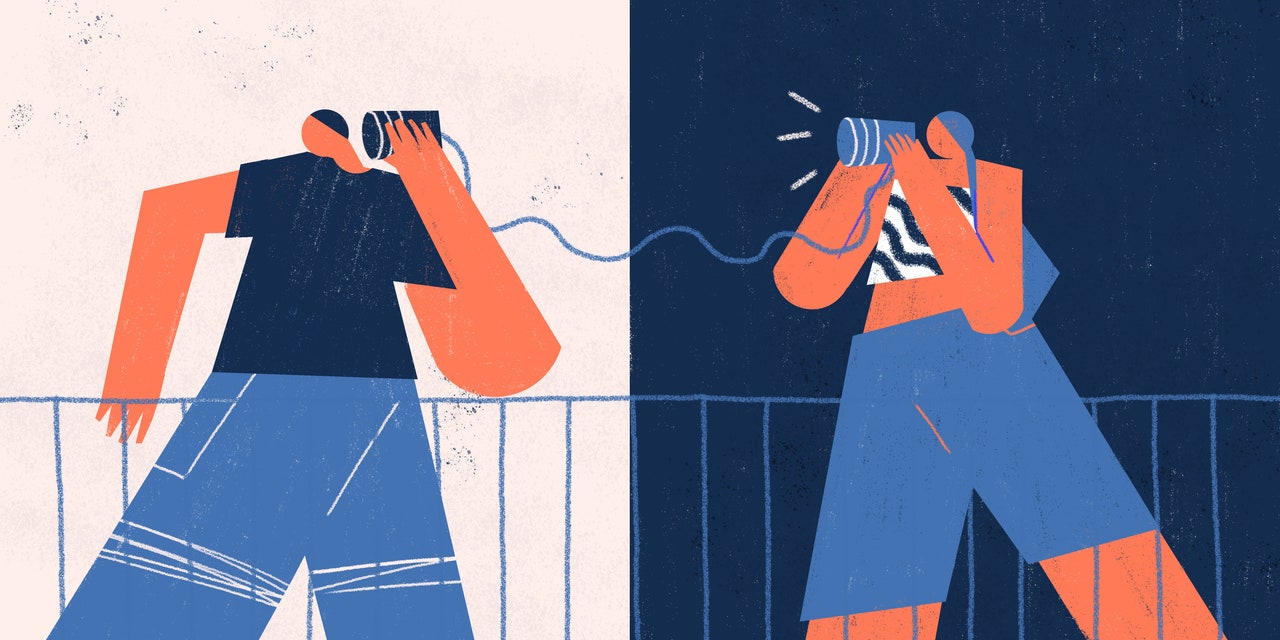You’ve probably heard it before: Communication is vital to healthy relationships. But that might be wayyyy harder than it sounds in case your partner is super proof against talking about how they’re feeling, or worse, doesn’t even really what’s happening of their head emotionally. That can result in an entire host of issues: tension, misunderstandings, resentment, and fights—to call just a few.
Naturally, it may be tough to feel near someone who’s tight-lipped about what’s *really* occurring of their brain. But Audrey Schoen, LMFT, a couples counselor offering online therapy in California and Texas, tells SELF that some people have never learned the right way to communicate about this type of stuff. Perhaps they were punished for getting upset as a child or raised by parents who had a difficult time expressing emotions, or perhaps societal gender norms are getting in the best way—that men must be mentally strong, and ladies shouldn’t be so emotional. Attachment style may also be at play. The Fifties-era theory suggests there are 4 different varieties of connecting with partners in relationships, that are influenced by your childhood. For example, some people have an avoidant attachment style and treat intimate conversations just like the burning fires of hell—so you could have your work cut out for you in case your partner has it.
This form of emotional distance can hurt, but there’s a likelihood you’ll be able to get them to be more comfortable with vulnerability with a bit support and training. Here’s the right way to encourage your partner to open up.
1. Do a pulse check on your individual feelings in regards to the situation first.
It’s common to feel frustrated, neglected, and lonely in case your better half isn’t great at, well, feelings, Schoen says. If you don’t know what the heck is happening of their head, your imagination can run wild. “You can make up your own ideas and assumptions about why they aren’t sharing their emotions or what it means about your relationship,” Schoen says. If, for instance, your boyfriend’s been sitting on the opposite side of the couch together with his arms crossed all night, you may wonder in the event that they’re mad at you or hiding something. (When in point of fact, they might just be drained.)
Again, you may consider your attachment style in this case, Tammy Nelson, PhD, a sex and relationship therapist and the chief director of the Integrative Sex Therapy Institute, tells SELF. So if you could have an anxious attachment style, you may have an intense fear of abandonment and crave closeness and intimacy. If your partner has an emotionally guarded avoidant style, the 2 opposing approaches, naturally, can sometimes result in conflict. (The other two styles are secure attachment, where close relationships are not any big deal for you, and disorganized attachment, where you could have a mixture of anxious and avoidant styles. Fun!)
It’s essential to evaluate your individual attachment style in case you’re feeling insecure in your relationship. Observe—and fact check—your thoughts: Do you could have actual tangible proof that their aloofness is because they don’t love you? Or, perhaps, are you filling in those gaps based on fear, and never facts? One helpful approach to find this out is thru journaling. Write (or doodle, if artistic expression resonates with you most) about how, say, your person’s aversion to emotions bums you out. That way, you’ll be higher prepared to have a relaxed, honest conversation if and when your partner’s ready. You may also be less prone to respond in a defensive, anxious way, Schoen says, which could make them even less inclined to share what’s occurring.
2. Ask questions that encourage them to reflect.
Your partner won’t recognize what they’re feeling, not know the right way to bring it up, or be afraid of what you’ll say in case you knew their inner thoughts. That’s where specific, open-ended, emotion-based questions (with answers that require greater than an easy “yes” or “no”) may also help, says Schoen.




















